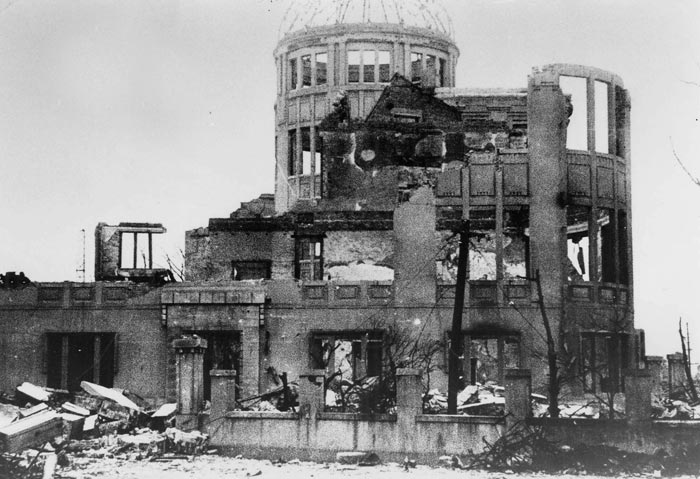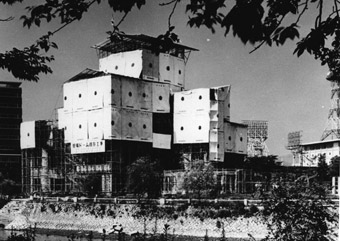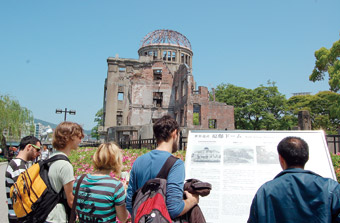Universal Heritage |
|||
|
A-bomb Dome
In 1995, fifty years after the bombing, the A-bomb Dome was designated as a national historic site. Then, in 1996, it became a World Heritage. Many people have supported the preservation of the Dome, and it is now a shared heritage of humankind.
|
 * Location: 1-10 Ote-machi, Naka-ku * Distance from hypocenter: 160 meters * Name at time of bombing: Hiroshima Prefectural Industrial Promotion Hall * Structure/number of stories: Brick, three stories * Completed: 1915 * Name when completed: Hiroshima Prefectural Commercial Exhibition Hall * Current status: World Heritage, A-bomb Dome |
||
 Hiroshima Prefectural Industrial Promotion Hall seen from the west end of Motoyasu Bridge. 1933. Taken by Masao Okuno / Courtesy of Katsuhiko Okuno
 Hiroshima Prefectural Industrial Promotion Hall two weeks after the bombing. August 20, 1945. Taken by Masami Oki / Courtesy of the Association of the Photographers of the Atomic (Bomb) Destruction of Hiroshima |
|||
 First stage of preservation work
First stage of preservation work
From April to August of 1967, Hiroshima City carried out the first stage of preservation work on the A-bomb Dome. Strong adhesive cement was poured inside of the brick walls and the interior was supported by steel framework at key points. July 1967 Courtesy of Hiroshima Municipal Archives |
A-bomb Dome: visited by people from throughout the world. May 2008.

|
||
